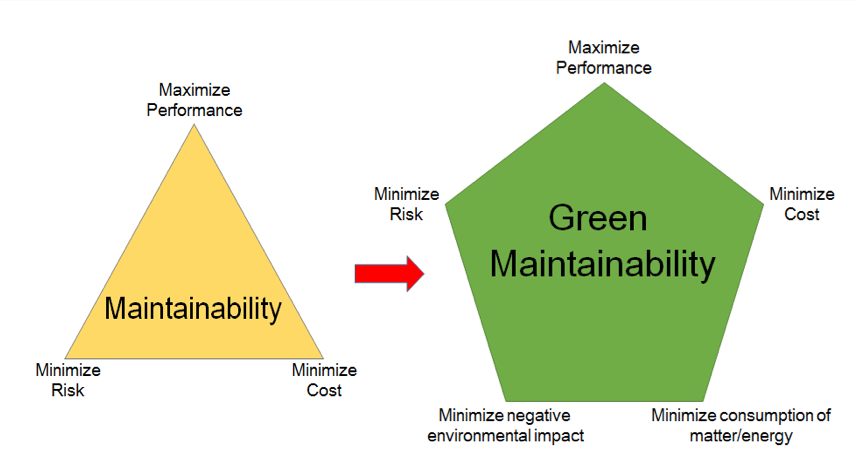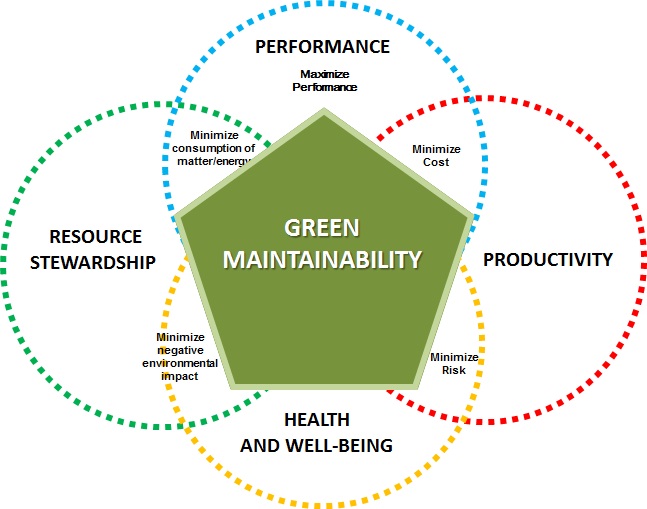Maintainability Scoring System
Objective
The objective of MSS is to promote more maintainable buildings to the industry through assessment of various contributing factors for the maintainability of buildings. This is a novel attempt to improve the performance of buildings and reduce the life cycle cost (LCC) during its post occupancy period. The term LCC is rather broad and encompasses initial, future and demolition costs. In this research, the definition of LCC cost is limited to the cost of maintenances such as repair, replacement, cleaning and benefits.
Components
Assessment Approach
Building maintainability is a composite of many factors and requires critical decision making which involves the optimum selection of building elements that required minimum cleaning, repair and replacement. In general, this is not a straightforward task given:
- the large number of materials and variety of systems and designs
- variability of the performance
- difference in the risk of failures associated with different systems and components

Building maintainability is hence a composite of many factors. It may be modelled in various forms one of which is LCC, in which case, the optimum maintainability that is the optimum LCC can be set at the minimum level of risk as shown in the figure above.
Therefore, the maintainability scoring system is a rational benchmark to assist in the selection of highly maintainable building designs to improve the performance of buildings and reduce the life cycle cost during its post occupancy period.
Further Research

Defining the Green Maintainability of Buildings
Building Maintainability vs. Building Maintenance
Building maintainability is a widely known concept that refers to achieving optimal performance throughout a facility’s lifespan with the least life cycle cost (Chew, 2010). It involves using building maintenance knowledge during the building design stages to ensure that building systems are able to be effectively and efficiently maintained without any compromises in terms of the ease of maintenance (Chew, 2010; Kumar et al., 2015). Seeley (as cited in Tan et al., 2014) defines building maintenance as any work carried out to sustain the building’s utility and value by keeping, restoring or improving every building’s parts, including its services and surroundings, to an up-to-date standard. From these definitions, it can be established that building maintenance and maintainability are two distinct functions of a building’s life cycle that inherently impose on the functionality of the building.
Green Maintenance
Green maintenance concurs with sustainable development strategies (Zhang et al., 2012) and is defined as making maintenance more environmentally benign by ensuring that maintenance has minimal negative environmental impacts while ensuring the protection, health and safety of maintenance personnel (Cheng and Wu, 2009; Ajukumar and Gandhi, 2013). Olanrewaju (2011) describes green maintenance as the adoption of a sustainable management approach in maintenance processes, methods and materials in order to minimize pollution that is financially prudent and encompasses social integration, ensuring an approach that meets the present users’ value structure without compromising the capability to meet users’ value structure in the future.
The Green Maintainability of Buildings
Considerations of the maintenance management of a facility at the planning and design stage are of utmost importance for the facility’s future performance attributes and life cycle cost (LCC). The demand for modern facilities to strive for higher performance standards means that prudent decisions must be made at the planning and design stage, as they will have a residual effect and vital impact on the facility’s future maintainability (Chew, 2015). Green FM encompasses waste minimization, energy management and utility reduction throughout the lifecycle of a facility. Chew (2010) states that the continuous development and enhancement of sophisticated facilities (e.g. green features such as photovoltaic integrated facades, vertical greening, and automated louvre systems) have boosted the requirement for more sophisticated quality maintenance strategies. To effectively prolong facilities’ lifespans and to enhance maintainability, the establishment of a comprehensive maintenance program coupled with good construction workmanship and an improved initial design which translate and deliver the design details as originally intended, are crucial and relevant (Wood, 2006; Lindsey, 2011).
Sustainable design and maintainability should be incorporated in the planning and design stages for the best positive impacts on LCC, which is realized over the operation stages – the longest in duration of the entire building delivery process. Therefore, green maintainability refers to sustainable design and maintainability with green facilities management (green FM) in mind. It requires considerations to maximize the performance, resource and energy efficiency of a building while minimizing the total life cycle cost, embodied energy, environmental impact and consumption of matter/energy throughout the lifecycle of a facility, right from the planning/design stage.

As shown in Figure 1, the five Green Maintainability factors are: a) Maximising performance – which pertains to the optimum efficiency of the building’s function via design values, building science & engineering, efficient energy use and sustainability; b) Minimising cost – which refers to the reduction of operations and maintenance costs and maximising savings during the entire building lifespan; c) Minimising risk – which relates to the lessening of probable occurrence of building defects and risks in the future; d) Minimising negative environmental impact – which means curtailing the possible adverse effects caused by the release of a substance in the environment; and e) Minimising consumption of matter and energy – which concerns in the management and conservation of energy and material usage in a building (e.g. water, electricity, waste, etc.) throughout the life cycle of a facility, right from the outset.
The Green Maintainability concept is linked to four sustainable outcomes in terms of Health and well-being which represents the quality of life for people (e.g. health and safety); Productivity pertaining to competitive productivity (e.g. cost savings and risk reduction); Resource stewardship concerning sustainable ecosystems (e.g. society and ecosystems survival across lifespans and generations); and Performance which relates to high performance and innovations.